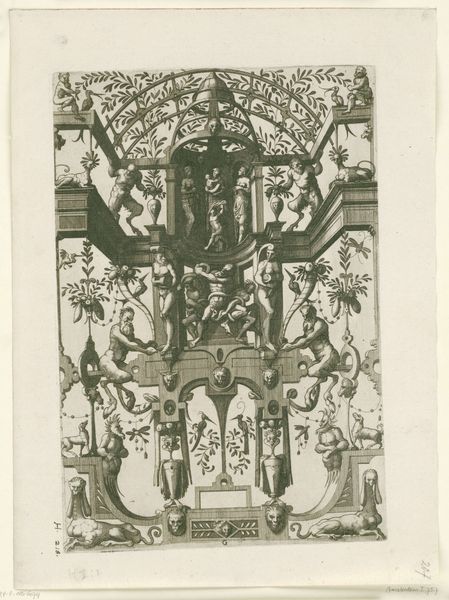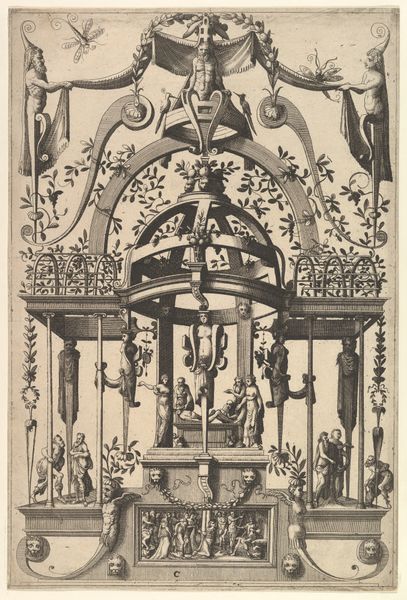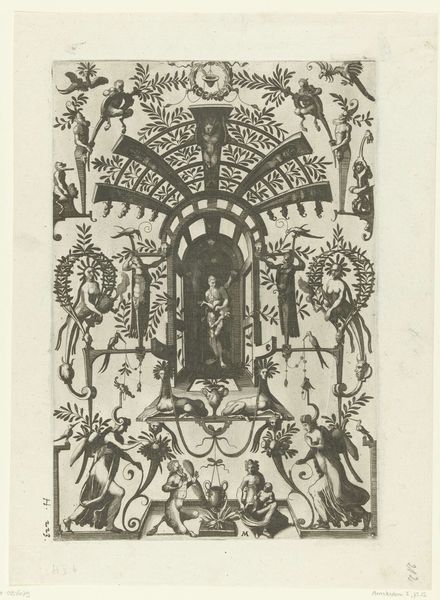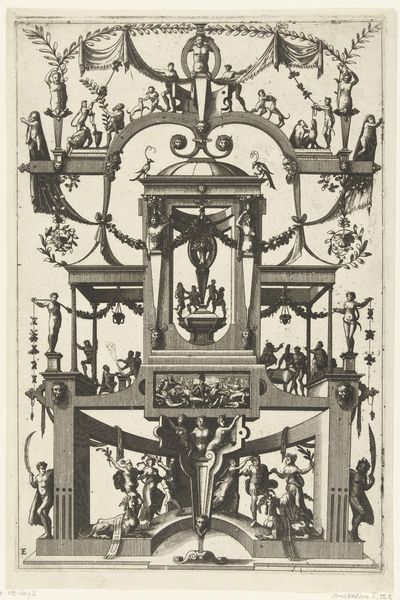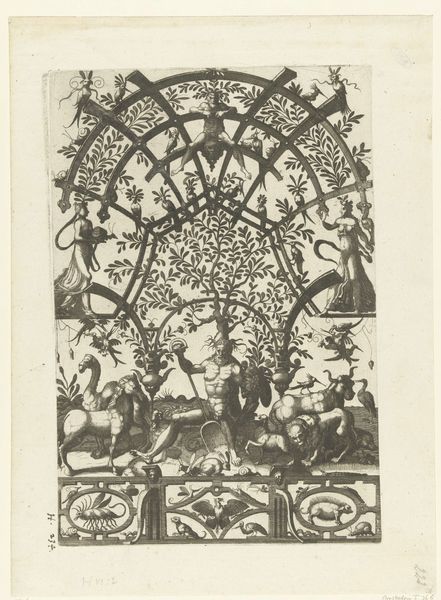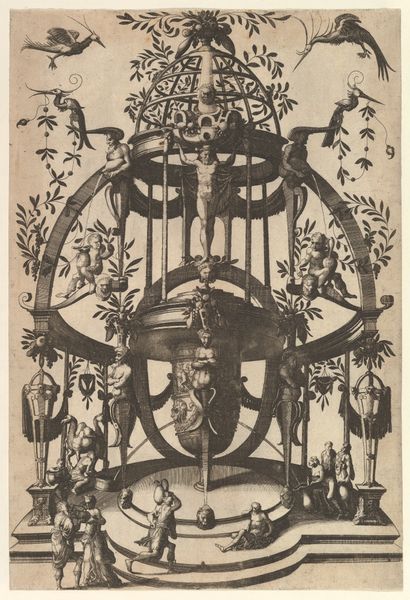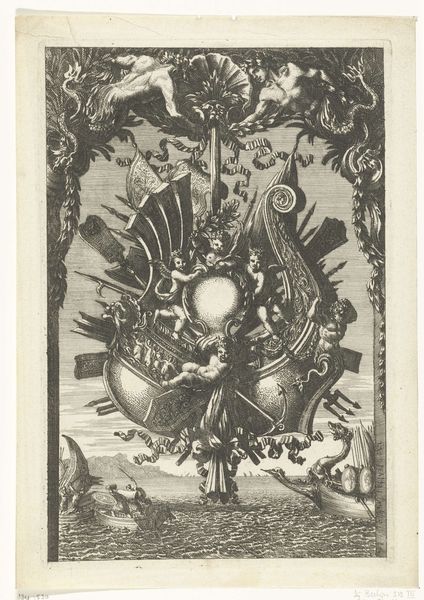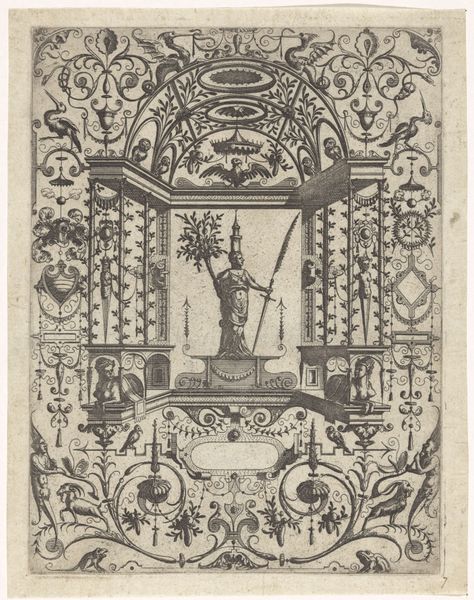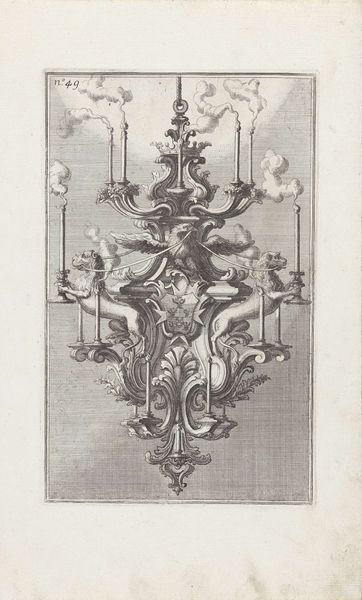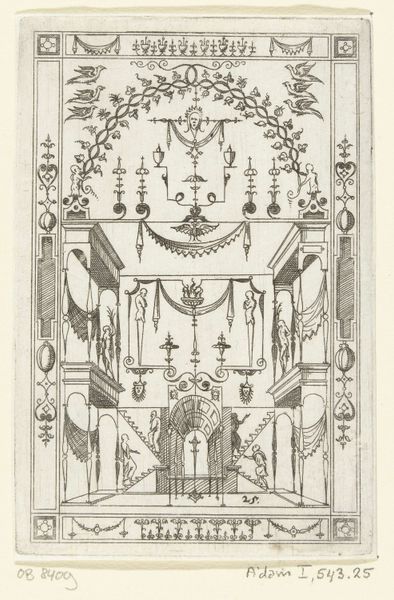
print, engraving
#
pen drawing
# print
#
old engraving style
#
figuration
#
form
#
11_renaissance
#
line
#
engraving
Dimensions: height 305 mm, width 205 mm
Copyright: Rijks Museum: Open Domain
This engraving by Johannes or Lucas van Doetechum depicts a fountain adorned with figures, vegetation, and architectural motifs. Notice the figures, cherubs and nudes positioned throughout, symbolizing classical ideals of beauty and harmony with nature. The vase, as the central element of the fountain, is an ancient symbol. Consider its earliest use in funerary rituals, where it held the ashes of the deceased. Over time, the vase has resurfaced in different cultural contexts: as a symbol of fertility in ancient Greek ceremonies, and as a decorative motif in Renaissance art, signifying abundance. This evolution reflects humanity’s enduring connection to the cycle of life and death, deeply embedded in our collective subconscious. Here, the vase-fountain expresses a convergence of aesthetic pleasure and deeper psychological resonances, engaging viewers on a profound level that transcends mere visual appreciation. The cyclical flow of water mirrors the eternal return, underscoring how the same symbols resurface, evolve, and take on new meanings across different epochs.
Comments
No comments
Be the first to comment and join the conversation on the ultimate creative platform.
